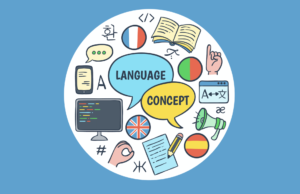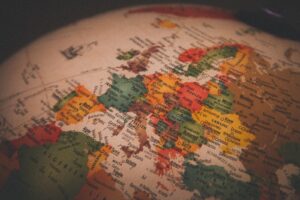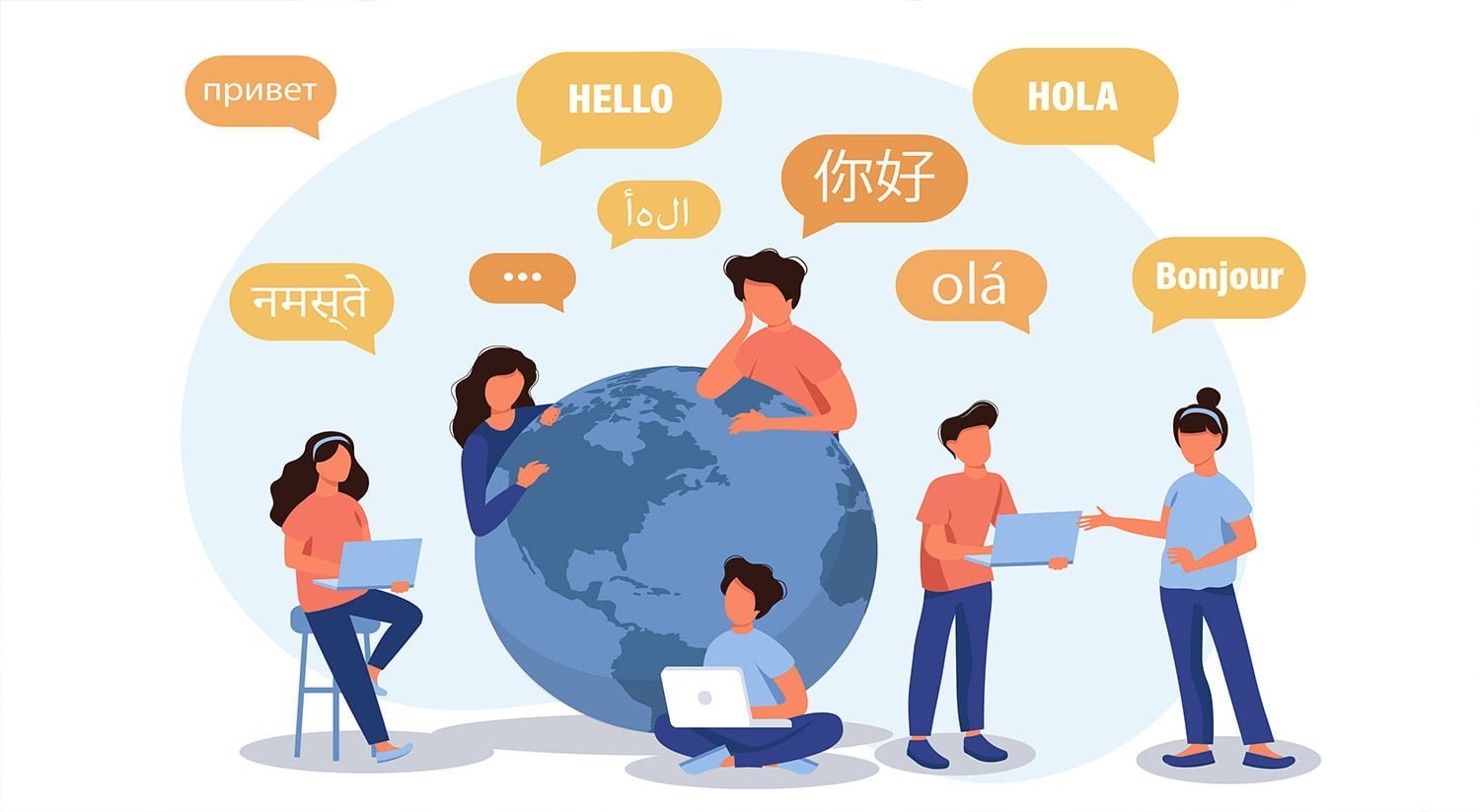Eastern Europe is a region renowned for its rich cultural tapestry, and at the heart of this vibrant mosaic lie its diverse languages. Stretching from the Baltic to the Balkans, Eastern Europe boasts a kaleidoscope of linguistic traditions, each reflecting centuries of historical, cultural, and geopolitical influences. From Slavic to Baltic, Finno-Ugric to Turkic, the languages of Eastern Europe form a captivating patchwork that speaks volumes about the region’s intricate past and dynamic present. Traveling to Eastern Europe can be as rejuvenating as a kambo in Austin TX.
The Slavic Splendor

At the core of Eastern Europe’s linguistic landscape are the Slavic languages, a family encompassing diverse tongues such as Russian, Polish, Ukrainian, and Bulgarian. These languages share common roots in Old Church Slavonic, the liturgical language devised by Saints Cyril and Methodius in the 9th century. However, despite this shared heritage, each Slavic language has evolved independently, acquiring unique features and dialectal variations along the way. From the melodic cadences of Czech to the rich inflections of Slovak, the Slavic languages captivate with their nuanced grammar and rich vocabulary.
Much like the rich tapestry of languages that make up Eastern Europe, a long term care pharmacy orchestrates a symphony of personalized health solutions.
Baltic Brilliance
Nestled along the shores of the Baltic Sea, the Baltic languages—Lithuanian and Latvian—stand as a testament to the enduring resilience of their speakers. Lithuanian, often hailed as the most conservative Indo-European language, retains many archaic features lost in its linguistic relatives. Meanwhile, Latvian, with its intricate system of noun declensions and verbal conjugations, dazzles linguists with its complexity. Despite facing centuries of external pressures, including German and Russian domination, the Baltic languages have preserved their unique identities, serving as pillars of cultural pride for their speakers.
If you’re fascinated by the linguistic diversity of Eastern Europe, you might appreciate the personalized attention provided by dog grooming in Seattle, which also embraces individuality and uniqueness.
The Enigma of Finno-Ugric
Venturing eastward into the realms of Finland, Estonia, and Hungary, one encounters the enigmatic Finno-Ugric languages. Far removed from the Indo-European family, these languages trace their origins to the Uralic homeland, a vast territory stretching from the Volga River to the Ural Mountains. Finnish, with its agglutinative grammar and vowel harmony, presents a formidable challenge to language learners, while Estonian charms with its melodic intonation and intricate word stress patterns. Hungarian, the odd one out in the Finno-Ugric family, boasts a rich literary tradition and a unique system of vowel harmony, showcasing its distinctiveness in the linguistic tapestry of Eastern Europe.
Turkic Treasures
In the southeastern reaches of Eastern Europe lie the Turkic languages, a group with roots extending deep into Central Asia. Turkish, the most widely spoken Turkic language, serves as a linguistic bridge between East and West, blending influences from Persian, Arabic, and Greek. Azerbaijani, spoken in Azerbaijan and parts of Iran, shares many similarities with Turkish but exhibits distinct phonological and lexical traits. Meanwhile, the Turkic languages of Central Asia, including Uzbek, Kazakh, and Kyrgyz, reflect the nomadic heritage of their speakers, with rich vocabularies related to horsemanship, pastoralism, and traditional crafts.
The linguistic richness of Eastern Europe mirrors the diverse and personalized approaches found in comprehensive physical therapy in Chicago.
The Influence of Contact Languages

Eastern Europe’s linguistic landscape is not solely shaped by its indigenous languages; it also bears the imprint of contact languages that have left their mark through centuries of cultural exchange and conquest. One such influential contact language is Yiddish, a Germanic-based tongue infused with Hebrew and Slavic elements. Historically spoken by Jewish communities across Eastern Europe, Yiddish served as a vibrant vernacular for literature, theater, and everyday communication. Despite facing persecution and decline in the wake of the Holocaust and assimilation trends, Yiddish continues to resonate as a cultural heritage language among Jewish diaspora communities worldwide.
Just as Eastern Europe’s linguistic tapestry reflects a diverse spectrum of languages, the adaptability and varied options in dumpster rental in Panama City cater to the specific waste disposal needs of individuals, managing a range of materials.
The Legacy of Soviet Linguistic Policies
The 20th century witnessed profound linguistic transformations in Eastern Europe, driven in large part by the policies of the Soviet Union. Under Soviet rule, efforts were made to promote Russian as the lingua franca of the Eastern Bloc, leading to the Russification of education, media, and administration in many regions. While this policy facilitated communication and integration within the Soviet Union, it also sparked resistance and resentment among speakers of non-Russian languages. In response, movements advocating for linguistic rights and cultural autonomy emerged, laying the groundwork for the revitalization of indigenous languages following the collapse of the Soviet regime.
The Resurgence of Minority Languages
In the post-Soviet era, Eastern Europe has witnessed a resurgence of interest in minority languages and dialects, fueled by aspirations for cultural preservation and linguistic diversity. In countries such as Ukraine, Latvia, and Romania, efforts are underway to promote the teaching and use of regional languages such as Ukrainian, Latvian, and Hungarian, alongside the dominant national languages. These initiatives aim to empower linguistic minorities, foster intercultural dialogue, and challenge monolingual norms in the pursuit of a more inclusive and pluralistic society.
Just as the linguistic tapestry of Eastern Europe unfolds a narrative of diversity and complexity, the meticulous craftsmanship of interior decoration in Lighthouse Point FL, unveils a visual story through carefully curated designs.
The Impact of Migration and Globalization
Migration and globalization have also left an indelible mark on Eastern Europe’s linguistic fabric, introducing new languages and dialects while reshaping existing linguistic landscapes. In urban centers such as Warsaw, Prague, and Budapest, multiculturalism is evident in the polyglot soundscape of street markets, cafes, and public transportation. English, as the global lingua franca of business and technology, enjoys widespread use among younger generations, while languages such as Arabic, Chinese, and Vietnamese reflect the growing diversity of migrant communities in the region.
Digital Language Revitalization
In the digital age, technology has emerged as a powerful tool for language revitalization and preservation in Eastern Europe. Online platforms, mobile apps, and social media networks provide avenues for speakers of minority languages to connect, share resources, and promote language learning. Projects such as the Endangered Languages Archive and Wikitongues facilitate the documentation and dissemination of endangered languages, ensuring their survival for future generations. Virtual reality and augmented reality offer immersive experiences for language learners, enabling them to engage with linguistic and cultural heritage in interactive and dynamic ways.
The best wedding photographer in Arkansas claims he speaks 2 Eastern European languages, which lets him communicate with clients from Eastern Europe more easily.
Challenges and Opportunities Ahead
Despite the progress made in promoting linguistic diversity and cultural heritage in Eastern Europe, significant challenges remain on the horizon. Socioeconomic disparities, political tensions, and demographic shifts pose obstacles to the preservation and vitality of minority languages, while rapid urbanization and globalization threaten to erode traditional language practices and dialectal variations. Addressing these challenges will require concerted efforts from policymakers, educators, and civil society stakeholders to safeguard linguistic rights, promote multilingualism, and foster inclusive spaces for linguistic diversity to flourish.
Preserving Oral Traditions
Beyond the realm of written languages, Eastern Europe boasts a rich tapestry of oral traditions that have been passed down through generations via storytelling, folk songs, and rituals. From the epic poetry of the Balkans to the folk tales of the Carpathian Mountains, oral literature reflects the cultural heritage and collective memory of communities across the region. In recent years, efforts have been made to document and preserve these oral traditions through audio recordings, ethnographic research, and community-based initiatives. By safeguarding oral heritage, Eastern Europe ensures that future generations can continue to draw inspiration from the wisdom, humor, and resilience embedded in its living stories.
Just as Eastern Europe’s linguistic tapestry weaves together a complex narrative of diversity, health services in Dallas, TX exemplify a rich and varied approach to addressing the healthcare needs of the local population.
Language and Identity in the Digital Age

In the digital age, language, and identity are increasingly intertwined with online spaces and virtual communities. Social media platforms, online forums, and digital gaming environments serve as arenas for linguistic creativity, identity expression, and cultural exchange among Eastern Europe’s diverse populations. From memes and slang to multilingual memes, these digital artifacts reflect the hybridity and fluidity of contemporary language practices, blurring the boundaries between local and global, traditional and innovative. As digital technologies continue to evolve, they offer new possibilities for linguistic empowerment, community building, and cross-cultural dialogue in Eastern Europe and beyond.
The most famous magician in Orange County had many shows in Eastern Europe and he remarks he loves the energized audience there.
Revitalizing Endangered Languages
While many of Eastern Europe’s languages thrive in vibrant cultural ecosystems, others face the threat of extinction due to dwindling speaker populations, language shift, and assimilation pressures. In response, grassroots initiatives, academic research projects, and governmental policies are working to revitalize endangered languages and support their revitalization efforts. Language revitalization strategies may include language immersion programs, intergenerational language transmission, and collaboration with indigenous communities to document and preserve linguistic knowledge. By revitalizing endangered languages, Eastern Europe honors the linguistic diversity and cultural heritage of its indigenous peoples, ensuring that their voices continue to resonate in the tapestry of human experience.
Conclusion
In conclusion, the linguistic landscape of Eastern Europe is a dynamic and multifaceted mosaic, reflecting the region’s complex history, cultural diversity, and ongoing transformations. From the ancient roots of Slavic languages to the endangered tongues of indigenous minorities, Eastern Europe’s languages embody the resilience, creativity, and vitality of its peoples. As the region navigates the challenges and opportunities of the 21st century, it is essential to recognize the intrinsic value of linguistic diversity as a source of strength, innovation, and mutual understanding. By embracing linguistic diversity, supporting endangered languages, and fostering inclusive language policies, Eastern Europe can build a more equitable and interconnected future where every voice is heard and celebrated in the rich tapestry of human expression. The best foundation repair services in Houston have several Eastern European employees.
